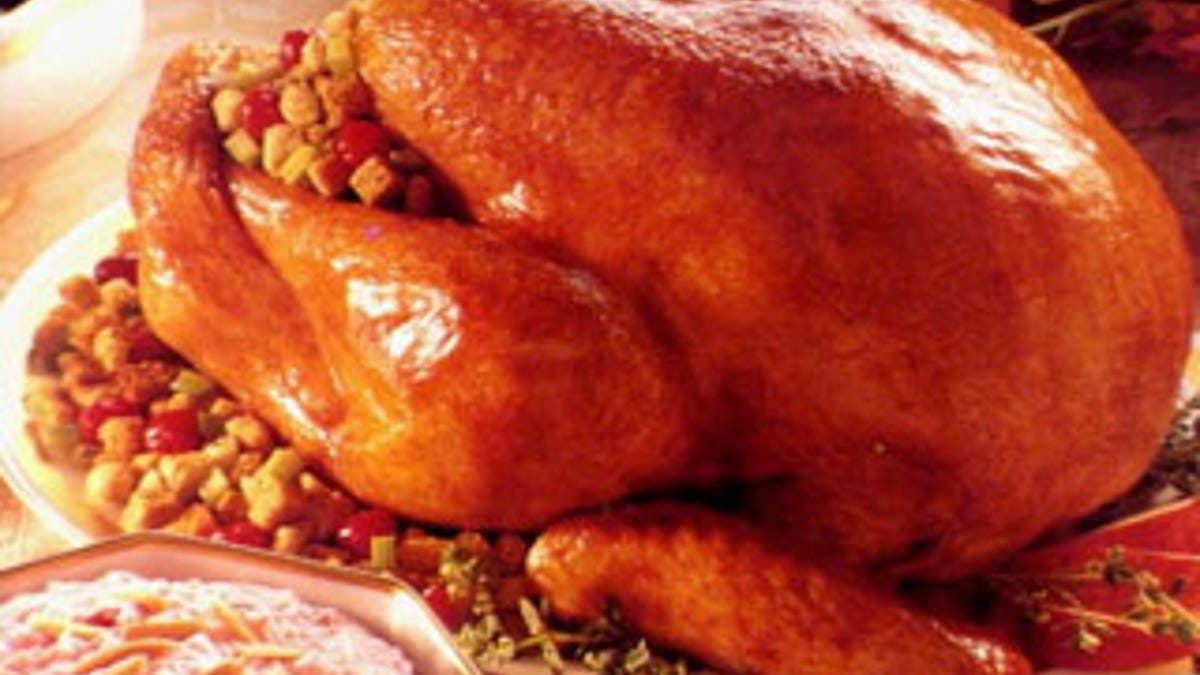
AP
The Thanksgiving Code: Five Hidden Symbols of America’s Holiday
The real story of Thanksgiving reads like a Dan Brown novel. It involves a little-known web of secret societies, biblical imagery, presidential power, and lost books. A few years ago, I set out on a 10,000-mile journey through the hidden symbols of American life that became the basis for my new book, "America’s Prophet: Moses and the American Story." One afternoon I was invited to join the all-male, secret society based in Plymouth, Massachusetts that is the keeper of the Thanksgiving flame. Thanksgiving begins in America’s hometown when these men make their annual sail across Plymouth Harbor to the off-limits island where the pilgrims spent their first Sabbath. What I learned on this trip would forever change how viewed America’s holiday.
Here are Five Secrets of Thanksgiving:
1. The Secret Society That Invented Thanksgiving.
The Old Colony club is the “oldest gentleman’s club” in America. It was founded in 1769 to avoid the “many disadvantages and inconveniences” of intermixing at local taverns. On December 11 that year the club started celebrated the pilgrims landing on Plymouth Rock. Since the term pilgrims was not in use at the time, members referred to their celebration as “Old Colony Day,” later “Forefathers’ Day.” They ate baked whortleberry pudding, clams, codfish, venison, eel, and cranberry tarts. It is the first recorded celebration of the pilgrims’ landing and introduced the tradition of future Thanksgivings.
2. The Little Known Connection Between Thanksgiving and the Bible
The first national day of Thanksgiving came about in 1789, long before Thomas Jefferson described a “wall of separation” between church and state in America. The idea came from Elias Boudinot of New Jersey, who helped design the Great Seal and was the founder of the American Bible Society. Boudinot introduced a measure into the U.S. House of Representatives to initiate a “day of public thanksgiving and prayer” to acknowledge the “many signal favors of Almighty God.” When his colleagues objected, he cited biblical precedent. Congress eventually passed a resolution and George Washington issued a proclamation on October 3, saying, it is “the duty of all Nations to acknowledge the providence of Almighty God, to obey his will, to be grateful for his benefits, and humbly to implore his protection and favor.”
3. How a Manuscript Lost for Two Centuries Led to Modern-day Thanksgiving
The fullest account of the Mayflower passage comes from the memoir "Of Plymouth Plantation," written by Plymouth governor William Bradford between 1620 and 1647. The manuscript remained in Bradford’s family for a century, unread by the public at large, before being left in the tower of the Old South Meeting House in Boston. When the British occupied the tower, the manuscript was lost for the next century. It appeared in London in the 1850's and was finally published in 1856, kicking off a revival in the popularity of the small band of pilgrims who landed in Plymouth in 1620.
4. Why the Pilgrims Preferred Thanksgiving to Christmas
The pilgrims were deeply focused on the Old Testament narrative of Moses leading the Israelites out of slavery in Egypt. William Bradford called King James "the pharaoh." On The Mayflower the pilgrims said their journey was as important as that of Moses. And the first thing they did upon reaching Cape Cod was get down on their knees and thank God for allowing them to cross their own Red Sea. Even the Bibles they carried on The Mayflower were emblazoned with an image of Moses on their title pages. As the Rev. Peter Gomes told me, “The pilgrims weren’t trying to recreate the biblical narrative. They were trying to fulfill it.” Their biblical literalism was so pronounced they refused to celebrate any holiday not mentioned in the Bible -- including Christmas. In their first year in Plymouth, the pilgrims worked on Jesus’ birthday.
5. The Connection Between the Statue of Liberty and Thanksgiving
In the 1860's, America lovers in France decided to honor the American journey of freedom by building a Statue of Liberty. Sculptor Frederic Bartholdi chose the Roman goddess of liberty as his model but he imported two icons from Moses to bring her to life. First, the rays of sun around her head and second, the tablet in her arms, both of which come from the moment Moses descends Mount Sinai with the Ten Commandments. Two-hundred fifty years after the pilgrims likened their journey to Plymouth Harbor to Moses, the Statue of Liberty welcomed millions of immigrants to New York harbor with the exact pose of Moses at the climax of the Five Books. On the statue’s centennial, Ronald Reagan harkened back to the pilgrims’ arrival in America:
“Call it mysticism if you will, I have always believed there was some divine providence that placed this great land here between the two great oceans, to be found by a special kind of people from every corner of the world, who had a special love for freedom and a special courage that enabled them to leave their own land, leave their friends and their countrymen, and come to this new and strange land to build a New World of peace and freedom and hope.”
Since its inception, Thanksgiving has always been about the sacred relationship among God, the people, and America, the new Promised Land. At its heart is the biblical figure of Moses.
Bruce Feiler is the New York Times bestselling author of "Walking the Bible" and "Abraham." His latest book is "America’s Prophet: Moses and the American Story."
